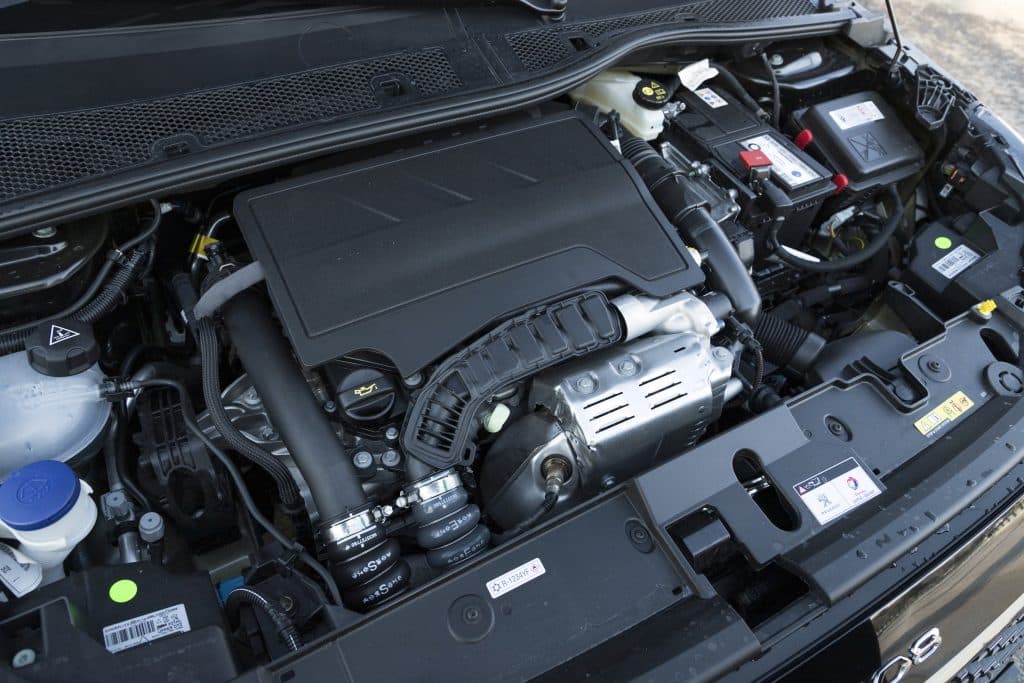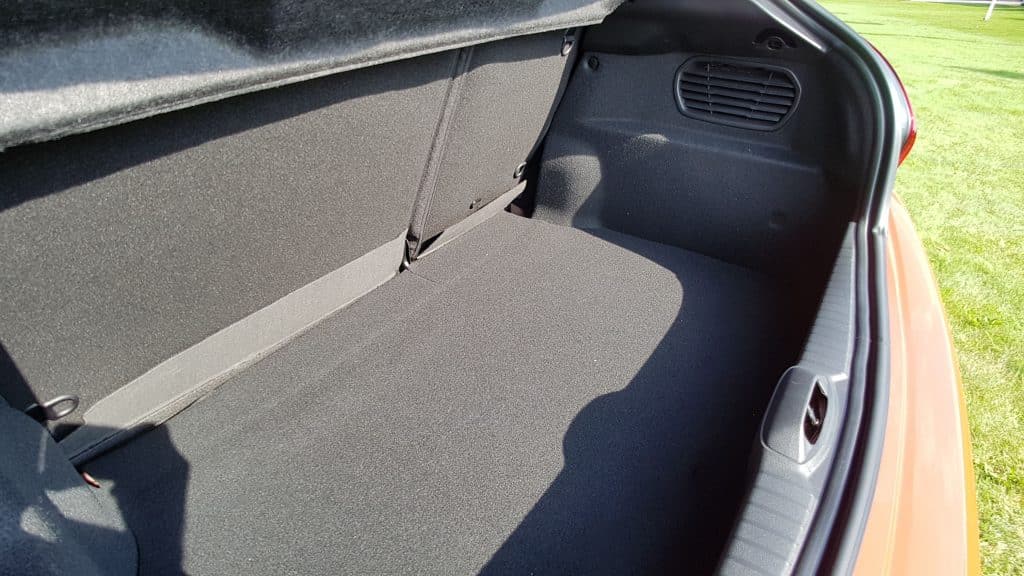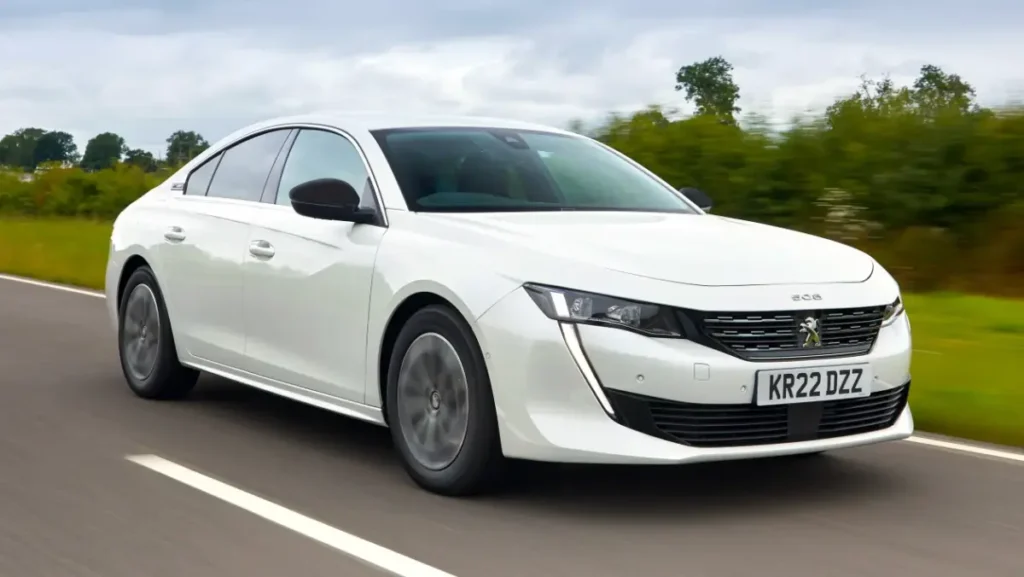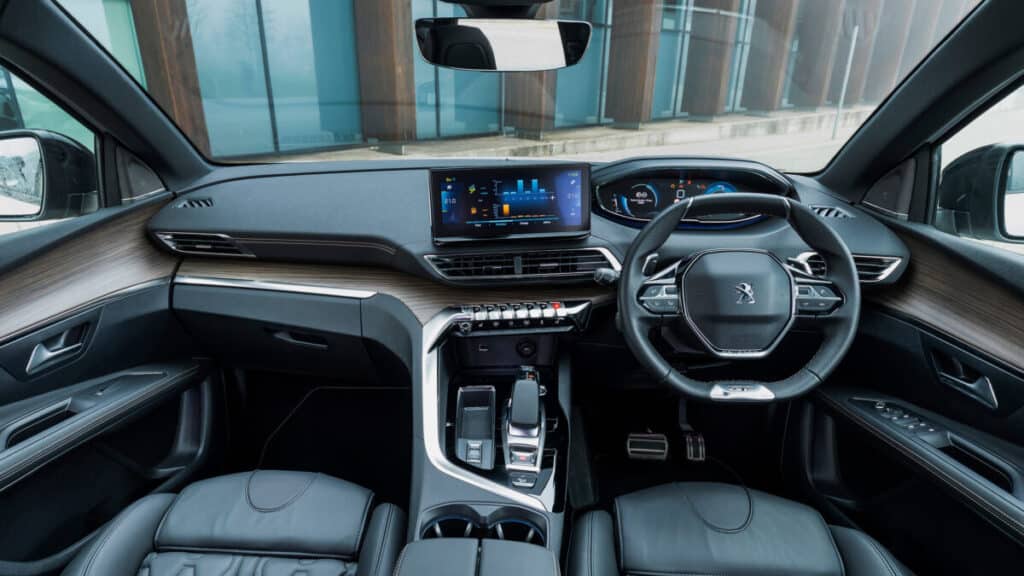The battle of the Frenchies – the Peugeot 208 and the Citroen DS3 (later just the DS3.) If you’re in the market for a used car chances are you’ve come across one or both of these models and are looking for some comparison information before you choose to buy.
In this article we’re going to take a comprehensive look at both the Peugeot 208 and the DS3 and how they stack up against each other, so you’re armed with the information you need before you buy. And I know my stuff, too – I owned a Peugeot 208 for several years, and as a mechanic, have worked on more DS3s than you can count.
Underneath the Peugeot 208 and the DS3 are very similar cars – even sharing aspects of interior trim and the running gear, including the engines and gearboxes. However there are a few specific and important things that separate them which we’ll go into in depth in this article.
Table of Contents
Let’s dive in first with a look at the specifications and statistics for both cars.
Citroen DS3 and Peugeot 208 – Specifications
Bear in mind that a lot of these figures change based on the specific engine, gearbox or trim level the car was fitted with, so sometimes we’ve had to give ranges rather than exact figures.
Also note here that we are discussing the DS3 up until the 19 plate series of cars, and not the post 69 plate. The reason for this is that the platform the DS3 was based on changed, and had much more in common with the Peugeot 2008 after this. To keep things fair we’re also talking about the first generation Peugeot 208 (also up to 2019) and not the post 2019 second generation Peugeot 208.
| Peugeot 208 | Citroen DS3 (later DS3) | |
| Power | 67 – 162bhp | 82 – 165bhp |
| 0 – 60mph | 7.1 seconds – 15.7 seconds | 7 seconds – 14 seconds |
| Doors | 3 or 5 | 3 |
| Seats | 5 | 5 |
| EURO NCAP safety rating | 5 star (2012) | 5 star (2009) |
| Used price range (Jan 2023) | £2,000 – £12,000 | £2,000 – £13,000 |
| Gearboxes | 4 or 6 speed automatic, 5 or 6 speed manual | 4 or 6 speed automatic, 5 or 6 speed manual |
| Driven axle | Front | Front |
| Boot space | 311 litres | 285 litres |
| Fuel economy | 40mpg – 68mpg | 45 – 80mpg |
| Road tax | £0 – £220 | £0 – £220 |
| Fuel capacity | 50 litres | 48 litres |
| Weight | 975 – 1295kg | 974 – 1175kg |
| Euro Emissions Standard | 5 and 6 | 5 and 6 |
We’re also referring to the non-GTi and THP versions of both the DS3 and Peugeot 208.
Let’s get into what separates these two popular French superminis.
Styling
In my view, these are two of the best looking used cars you can buy – far better than even the Ford Fiesta of similar vintage, although I’m a big French car fan so that might have something to do with it.
The Peugeot 208 is a huge step up from its predecessor, the 207 – which was designed and built during a period where Peugeot had almost lost their way in terms of design. Thankfully, the 208 is a very handsome little car, and while I feel it looks better from certain angles rather than others, it’s a very respectable piece of design and one that would look right at home on anyone’s driveway.

I do, however, think the Citroen DS3 beats the 208 in this category, as it’s just that little more distinctive, interesting and funky-looking. It looks more purposeful than the 208, and pitching them side by side does give you a real perspective at how much more modern and fresh the DS3 compares to the 208.

As much as I’m a Peugeot 208 fan, the DS3 wins the styling award.
Winner – DS3
Engine and drivetrain
This is where we will struggle to set apart the DS3 and the 208 as underneath they are essentially the same car. Both models were manufactured with Peugeot/Citroen’s range of Puretech/VTi petrol engines and HDi diesel engines.
We’ve written extensively about both types of engine on The FatMech, but it’s worth giving you a whistle stop tour of what is available and what you should look out for.
Petrol 1L/1.2L/1.4/1.6 PureTech/VTi engines
The 1.0L and 1.2L are great for town driving and short distances. They’re reasonably economical and will handle the odd motorway run. They aren’t particularly refined engines, and you will absolutely not want to buy one if you are doing 20,000 miles per year on the motorway.

Make sure you service these engines when required. If you don’t you are opening yourself up to lots of potential problems including issues with the timing belt. These engines also tend to burn oil when they get to around 60,000 – 70,000 miles, so you must watch out for this (I’ve had these cars where the owner doesn’t check the oil, and the car has burned oil and caused damage to the engine.)
The 1.4 and 1.6 suffer from similar issues that plague the smaller engines but are far more refined and more fun to drive – with these engines you feel like you have enough power to get out of your own way without the engine screaming at you. Either would be my choice in a petrol engined 208 or DS3.
Diesel 1.4L/1.6L HDi/BlueHDi engines
These are cracking engines and genuinely some of the best diesel engines that have ever been put in a French car. You will find these engines in Peugeot/Citroen vans, Ford, Volvo and Mini cars, just to name a few. You again need to keep them serviced at the recommended intervals but far less goes wrong with them than the petrol engines. Again, get the cambelt changed as per the service requirements as this has a tendency to fail at around 100,000 – 110,000 miles.

If it were my choice I would pick a BlueHDi over an HDi as the BlueHDi is Euro 6 compliant and will allow you to drive into clean air zones without charge. The only real difference between the two is the addition of an AdBlue tank which you will need to have topped up as and when it runs low as if you don’t this will prevent the car from starting.
Additionally don’t buy a diesel if you’re doing less than 10k per year or if you’re mainly doing stop-start or town driving, as you will clog up the DPF. For the sales rep or consultant doing 20k a year on motorways, however, these engines are perfect.
Gearboxes
This is where the drivetrain can fall a bit short on either car. They share the same family of gearboxes – either a 5 or 6 speed manual, a 4 speed automatic, a 5 speed automated manual transmission or a 6 speed EAT manual transmission.
Very quickly – don’t pick either the 4 speed or 5 speed auto. The 4 speed is very unrefined and the 5 speed is basically a manual gearbox with the clutch operated by a computer. This can be very jerky and unpleasant to drive so I would steer clear altogether and go for the proper, torque converter EAT6 automatic gearbox. This wasn’t fitted until after 2015, so you may need to spend a bit more money to get a later car if you need auto.
As far as manuals go, the 5 speed manual is reliable but it is unrefined and noisy. You’ll often notice clunks, especially when shifting into third gear or downshifting into first gear. It isn’t precise and feels a lot like churning butter – nowhere near as snappy as the gear change on a Ford Fiesta, for example.
The 6 speed manual is by far the better option. While it’s a little less vague than the 5-speed, it’s still not particularly precise, but is a far better gearbox in that it’s much more refined and a lot less noisy. This would absolutely be my choice across the whole range.
Winner – draw
Interior
Both cars are very stylish on the inside. There’s definitely an element of that French flair for style present on both cars, but I’d have to say that the more distinctive interior belongs to the Peugeot 208. The DS3 is a little bit too normal in this respect – although it is very smart.
What you’ll notice when you spend time in either car is that they share a lot of the internal components – window controls, indicator and cruise control stalk, etc. However, while the style of the 208’s interior does take the crown, the build quality has to go to the Citroen, as it feels just that little bit more premium and upmarket inside.
Creature comforts like an armrest and cup holders are worth mentioning here – neither car comes with an armrest as standard, although you can purchase one from the dealer or aftermarket models on eBay and Amazon. The Peugeot 208 comes with two cup holders that are between the two front seats, and with an option to purchase additional cupholders that fit in the little space underneath the heater controls. These are a bit pointless though, as they only really fit a small can of Coke and anything larger than this won’t fit. They’re also not really wide enough for two cups.

The DS3 however doesn’t have any cup holders as standard but you can buy an accessory part from Citroen to retrofit one cup holder – which in all honesty really isn’t great.
One thing we really need to mention here is Peugeot’s i-Cockpit. I will preface this by saying that I never, ever noticed any of the problems people complain about in relation to the i-Cockpit, and I’m pretty tall (6’1”) but there are a lot of people complaining that due to the design (you are supposed to view the dials over the steering wheel, and not through the wheel as you do on almost every other car) that the dials aren’t visible or they are obstructed by the wheel.

You need to try the 208 before you can make a call on this – make sure you adjust the steering wheel to a point where you can see the dials and drive comfortably at the same time.
This section goes to the 208 – while the DS3’s build quality is better and feels a bit more refined inside, the 208’s styling is better and the lack of cupholders in the DS3 for anyone who spends any significant amount of time on the road is a bit of a dealbreaker.
Winner – 208
Practicality
This is another section where the 208 wins out, simply because of two things – boot space and doors.
The difference in boot space isn’t massive (only 26 litres) but it does mean that the 208 is a more practical option. The real difference however is that the DS3 only comes with 3 doors – a 5 door version was never made. The 208 comes with both 3 and 5 doors (and in my opinion, with the exception of the GTi, the 5 door looks better than the 3 door).
Both cars have quite a high boot lip, and if you’re fitting anything larger than a few suitcases, you’re going to have to at least remove the parcel shelf, if not lay down the split folding rear seats. In neither car do the seats fold flat, and you might find that anything reasonably tall brushes the roof lining due to the fact that the rear seats sit at such an angle when laid flat.

While both cars are small, the Peugeot 208 does far better in the rear and can (at a squeeze) fit three large adults sitting in the back. The DS3 is much more of a struggle, and for anyone taller than six feet, it’s not a pleasant or comfortable experience – and you may find that you need to sacrifice the middle seat due to space constraints.
A spare wheel is also standard across the range of 208s – you don’t get one in the DS3.
However, both cars come with ISOFIX in the rear and in the front, and both have reasonable sized tailgate openings. Additionally due to the similar range of engines and gearboxes, braked and unbraked towing weights are respectable for this class of car.
All in all a disappointing performance for the DS3 – and this one goes to the 208.
Winner – 208
Reliability
All in all this is very similar across the two cars simply because they share so much of their drivetrain. Pick diesels and not petrols if you want better reliability – you should easily get 150,000 miles out of an HDi engine without too much trouble providing you use it properly.
If you have a petrol be prepared to change the timing belt at 60,000 miles and six years, and be prepared to carry around a bottle of oil with you and check the dipstick every thousand miles.
Gearboxes are fairly reliable units unless you’re driving like a boy racer – clutches should last you just as long as they’d last in any other car and big repair bills for these cars aren’t common.
On the 208 in particular, watch for common issues such as front strut top mounts going bad, and on the DS3 watch for snapped springs and electric windows failing.
Winner – draw
Conclusion
So the results are in – let’s see who’s won.
| Styling | DS3 |
| Engine and Drivetrain | Draw |
| Interior | 208 |
| Practicality | 208 |
| Reliability | Draw |
Overall winner – Peugeot 208
With two draws, that makes it 2-1 to the 208! Fundamentally these are very similar cars, but you’ll need to decide whether the dealbreakers I’ve listed in this article are actually dealbreakers for you. Generally however, these are good little cars and you should have many miles of trouble free motoring out of either of them.
We’ve written extensively about the Peugeot 208, and so if you’re interested in learning more about the car you are potentially going to purchase, check out some of our more detailed articles below.
Looking for a used car in the city of Jackson Township, NJ? We invite you to visit schumacherused.com!
Peugeot 206: A Closer Look at Reliability
Unveiling the Truth about Peugeot’s 2.0 HDi Engine Reliability
Peugeot Engines: Analyzing their Reliability
Unraveling the Reliability Factor of Peugeot 307
Peugeot 508: A Deep Dive into Reliability and Performance
Unveiling the Truth About Peugeot 308 Reliability
Exploring the Reliability of Peugeot Boxers
Are Peugeot 107 Reliable? A Comprehensive Analysis
A Comprehensive Guide to Turning Off Economy Mode in Your Peugeot 307
Are Peugeot 3008 Reliable? – An In-Depth Look at the Popular Crossover Vehicle
About the author
Marcus Brown is editor-in-chief of The FatMech and is a mechanic with ten years' experience based in London, UK. Having worked for major dealerships for many years, Marcus now works for a local independent garage and has experience working on nearly every make and model of car. Marcus also has a passion for writing and teaching, which is where the idea for The FatMech came from. In his spare time, Marcus enjoys playing golf, doing home renovations and gardening. He lives just outside London with his wife and son.











